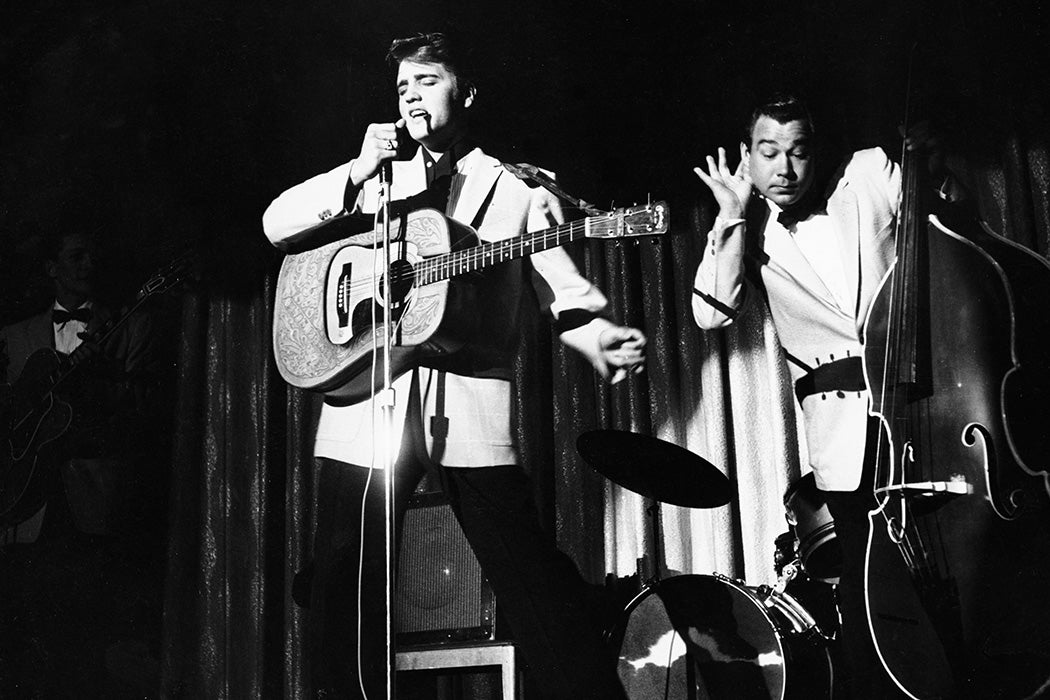From the time it hit the national consciousness in the mid-1950s, rock and roll was a target for Christian preachers who viewed it as sinful. But, as historian Randall J. Stephens writes, the music was deeply influenced by Christian worship—specifically, energetic, music-filled Pentecostal services.
Stephens writes that Pentecostalism began in the early twentieth century with raucous revival meetings in the American West and South. The preachers and crowds—including Black and white men and women—sang, shouted, and spoke in tongues. They described their time as the last days before Jesus’s return.
By the 1920s, Pentecostals had generally split into separate Black and white fellowships, and it became less common to see women preaching. But the services, often held in storefront spaces, barns, or other make-do churches, continued to be filled with energetic rhythmic music, faith healing, and ecstatic shouts.
To those from more sedate churches, whether Black or white, Pentecostalism often appeared undignified. Stephens writes that elite and middle-class commentators derided its worshipers, who were often agricultural or domestic workers, as “holy rollers” with suspiciously suggestive religious practices. But Pentecostals often delighted in this difference. As one Black Ohio worshiper interviewed in the 1960s said, “I wouldn’t give two cents for a religion that wouldn’t make me move. My God is a living God.”
Nineteen-thirties gospel singer and guitarist Rosetta Tharpe, known as the Godmother of Rock, got her start in a Pentecostal church. So did early rock and roll legends B. B. King and Jerry Lee Lewis, country stars Johnny Cash and Tammy Wynette, and, of course, Elvis Presley.
As a teenager, Stephens writes, Presley attended a Pentecostal church called the Memphis First Assembly of God, though he sometimes snuck out of the services to attend Black churches from similarly high-energy traditions. He found inspiration in acrobatic traveling preachers and gospel musicians with pompadours and flashy clothes. Asked about his famously scandalous gyrations on stage, Elvis once said “I always liked spiritual quartets and they sing like that.”
James Brown also cited the influence of a Pentecostal preacher, a Cape Verdean immigrant called Bishop Daddy Grace. Grace wore his hair shoulder-length and enjoyed gold-trimmed suits and sometimes a cape; he led worshipers in such energetic worship that posts in the church had to be padded to prevent injury.
Weekly Newsletter
“They had the beat,” Brown said later, recalling worship sessions that featured trombones, singing, and clapping. “Sanctified people got more fire.”
The furious backlash against rock and roll, fueled by worries about race-mixing and teenage sexuality, often echoed rhetoric used against Pentecostals. But many Pentecostal leaders also decried the new secular music. Some denied it had any connection to their worship style, but some clearly saw a connection. Pastor David Wilkerson claimed that Elvis had made a pact with the devil and “Satan has used rock and roll to imitate the work of God at Pentecost!”







